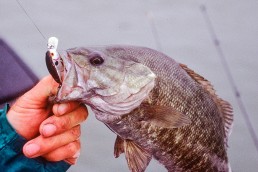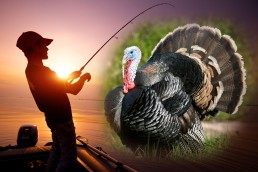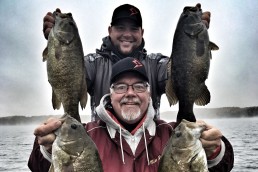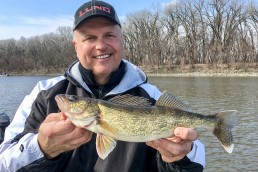Spring Float Trips for Smallmouths
SHARE THIS POST
Float trips are notorious tackle busters. As with all river fishing trips, the multitude of sub-surface obstacles tend to take a heavy toll on the angler’s equipment and patience. But, with the right ultra-light gear, setting the hook on a smallmouth bass is all the excitement one can desire.
To the hardcore river fisherman, floating for smallmouths is close to heaven. Setting out in a flat bottom Jon boat, one gently floats downstream.
The trip is interrupted only by stops to wade in riffles and cast to deep pools in search of fish. A shore lunch of panfish fresh from the river can be an awesome break.
Features that hold fish
The shoreline of most Kentucky/Tennessee streams contains numerous stands of hardwoods standing guard over the gravel bars, channel-constricting brushy islands, log jams, deadfalls and root wads.
The rocky bottoms are conducive to the development of a good smallmouth fishery. Usually present are goggle eye (rock bass), pumpkinseed sunfish, bluegill, creek chubs, shiners and bullheads.
As with most steam fishing, the secret to find fish seems to be casting under overhanging trees. Shady locations during sunny periods prove the most prolific. If the location also contains rock structure or gravel, chances for a strike improve.
Are you enjoying this post?
You can be among the first to get the latest info on where to go, what to use and how to use it!
Other wood structures are worthy of investigation with a cast or two. The wood can be either a lay-down in the water or an exposed root system on the shore.
Rock ledges on shore will usually continue into the water. Often, smallmouths will use them to rest between forages into the fast water in search of some hapless minnow or a crayfish. Any type of structure near a main stream channel is worthy of exploration. Eddy areas are prime locations. The smallies rest in the slack water to save calories. They can dart from there into the faster water in search of forage.
Lures to launch
A different day of fishing might result in changed conditions and a need to change lures. On the first day, the bite might typically be basic topwater with small crankbaits producing the fish. Such a day might be cloudy and rainy. Creek water is usually shallow for the most part. Day two might be sunny and bright. The fish will go deep requiring a lure change to dark jigs and double-tailed grubs. These work best in deep pools and long stretches of broad, shallow flats.
River fishermen are accustomed to the high mortality of their terminal tackle. It is a cost of the sport. To the novice, it seems that a great deal of tackle winds up stuck in the submerged wood or wedged in a crack between rocks.
Because drifting anglers prefer light tackle, the ultra-light rods and 4 to 6-pound-test monofilament line are popular. Such tackle lends itself to loss. Lures seldom exceed 1/4-ounce with most being 1/16 to 1/8-ounce. Such small lures will find small areas in which to get stuck.
Drift fishing is a festival of fishing experiences. The long, shallow riffles, contrasted with deep, rock-strewn runs and broad, deep pools challenge anglers of all ranges of experience. Floating is the only way to visit the entire range.
MWO
SHARE THIS POST
Did you enjoy this post?
You can be among the first to get the latest info on where to go, what to use and how to use it!
Don Gasaway
Don Gasaway is a veteran freelance outdoor writer from Marion, Ill. He may also be found at: https://www.facebook.com/DonGasawayWriter and facebook.com/Wandering Angler. Comments are welcome



